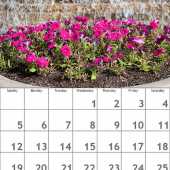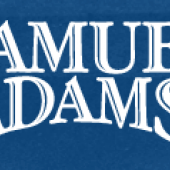city folks
A Cheap Shot
Shipment Status with buymeds.com
Apology for Ann? Not Necessary
Jobs
Wednesday Hebrew: The Philosophy of Bet
Apology for Ann? Not Necessary
My German Shepard & Her Sparrow Best Friend
Rumor Mill
(a) turning 29 next season, (b) the owner of five consecutive 40-homer seasons, (c) a 130-140 OPS+ hitter, and (d) lefthanded in Safeco.This presumably makes him a legit Zduriencik target. Youse guys told me that Zduriencik is focused, right?! ::crickets:: I don't know if we're going to have to spend the next five years playing badminton against the idea that every FA is Richie Sexson, but simply note that (a) if Dunn has precisely Sexson's weird decline, he'll have three great years from here, and (b) Safeco doesn't demoralize LH hitters. If Jeff Clement ever produced exactly Adam Dunn's lines from the last five years, we'd all be thrilled. ................... COEFFICIENT OF CONFIDENCE = 0.40: Rocco Baldelli has supposedly received word that his possibly terminal disease (a mitochondrial disorder) was misdiagnosed; now the diagnosis is channelopathy, a very treatable disease. At 24, Baldelli hit .300/.340/.530 in CF and looked headed for a possible Dale Murphy career. Baldelli was actually, what Adam Jones and Greg Halman dream of becoming. If all of a sudden he's healthier than Brandon Morrow, it's worth keeping an eye out. Imagine having a CF playing LF next to F-Gut and Ichiro. ....................... COEFFICIENT OF CONFIDENCE = 0.70: That M's fans will spend the winter hoping for that one MOTO bat that will make the 2009 M's truly interesting ... and then find out, after the M's sniff around for hometown discounts and don't get them, that the M's are "way over budget already" and are going with Bryan Lahair. COEFFICIENT OF CONFIDENCE = 0.20: That M's fans will watch Dr. D disappear like Bobby Fischer, reappear just as suddenly to post 10 times a day, and nothing weird will come of it. Cheers, Dr D .................... image: http://cdn.faniq.com/images/blog/p1_dunn-SI-mangin.jpg
Winter Deer Feeding
I live in an area of Washington that is surrounded by protected natural land. Deer are frequent visitors, particularly the Columbian black-tailed deer. We see them enough that we recognize small family groups of a mom and her two children, born last year, a young two year-old male with spikes, and a majestic buck.
It snowed Saturday night, quite a lot, for the region, and the ground accumulated about four inches. Most of the snow is still on the ground and on the trees, covering the forage the deer might otherwise eat. And it's been bitterly, atypically cold since Saturday, with day temperatures as low as 17 F.
I've seen the deer's tracks, but not the deer, and I've been a little worried about whether or not they were getting enough to eat. I know that in New Hampshire, and Vermont, and lots of other states, the Fish and Wildlife or Game departments urge that people not feed the deer. There are a number of reasons for not feeding wild deer:
- The deer become accustomed to humans, and very quickly become pests, relying on humans for all their food
- Once they are accustomed to humans, deer are much bolder about invading (and nibbling to death) yard plants and gardens.
- Often humans feed deer food that deer really can't digest, or that doesn't supply proper nutrients.
- Deer are more likely to congregate around food, and thus may quickly spread debilitating diseases throughout the local population, particularly Chronic Wasting Disease.
I was surprised to discover that Washington's department of Fish and Wildlife isn't nearly as adamant about feeding deer. They point out the problems, including the expense of providing proper feed in quantity, and for long enough to help deer survive, the fact that establishing feeding stations encourages deer to congregate, thus increasing exposure to disease, and predators, and, given where non-professionals feed deer, an increase in deer-related traffic problems. Most notably, they mention that deer' take time to become accustomed to pellet feed, and it may take several weeks for their digestive systems to adapt, and if they lack fat reserves to draw on while they adapt, deer can die of starvation with a full belly of food that they can not digest.
Yet the Washington Fish and Wildlife handout concludes:
If—after considering all these issues--an individual chooses to feed, the best artificial deer feed is a pelleted ration that contains approximately 50 percent alfalfa and 50 percent grains. Barley and corn are the recommended grains. Some feed stores carry deer pellets, but a ration prepared for horses is also suitable if it is a "complete" formula. . . . Once artificial feeding is begun, it should be continued through March or April until natural forage plants are available.
I think the reason for the different approach to wild deer feeding in Washington is based on the presence of cold snaps like the atypical one we're having now. I note the handout says that WDFW will occasionally feed the deer and elk themselves, especially when local conditions draw deer into cropland or orchards where they don't usually appear, when "Circumstances such as long-range weather forecasts, severity of snow and temperatures, the animals' condition" suggest emergency feeding might be appropriate.
I'm not going to start feeding the local deer yet, but it is worth keeping in mind if this cold snap persists. Right now, the snow shows no sign of thawing, but that could change in a day or two.


